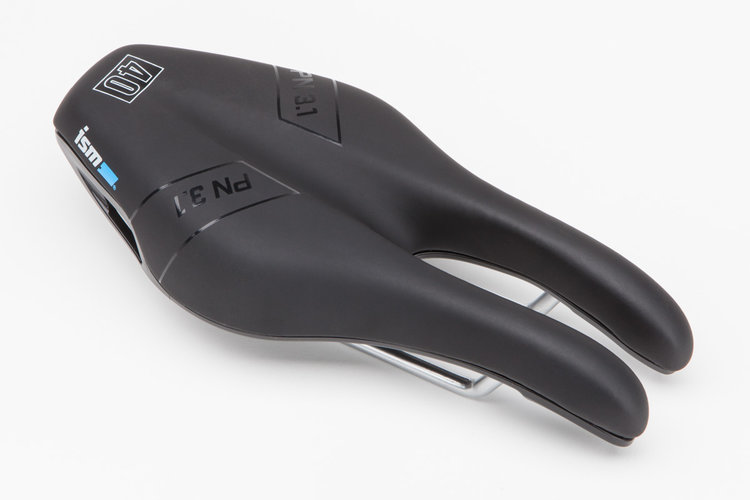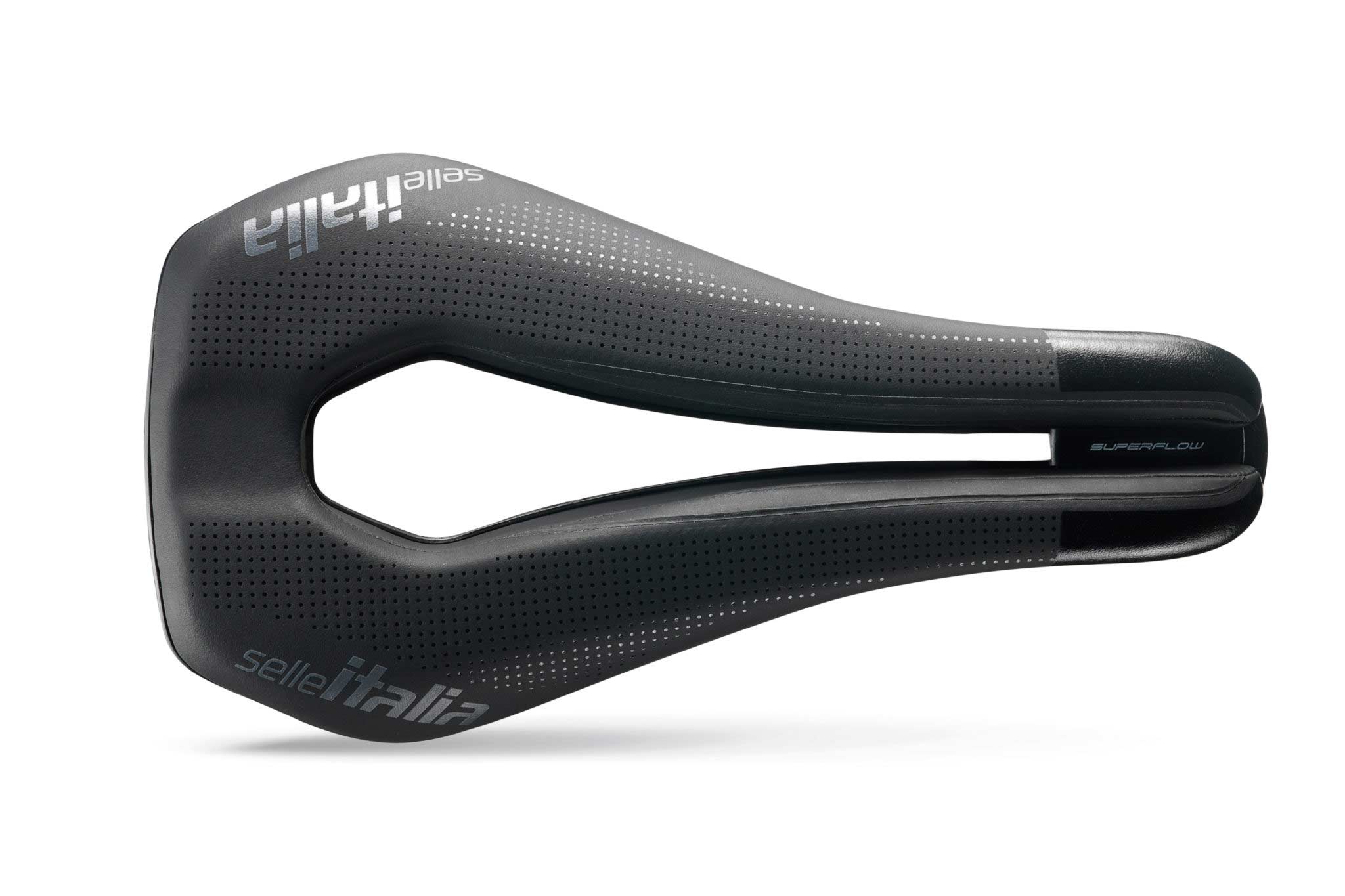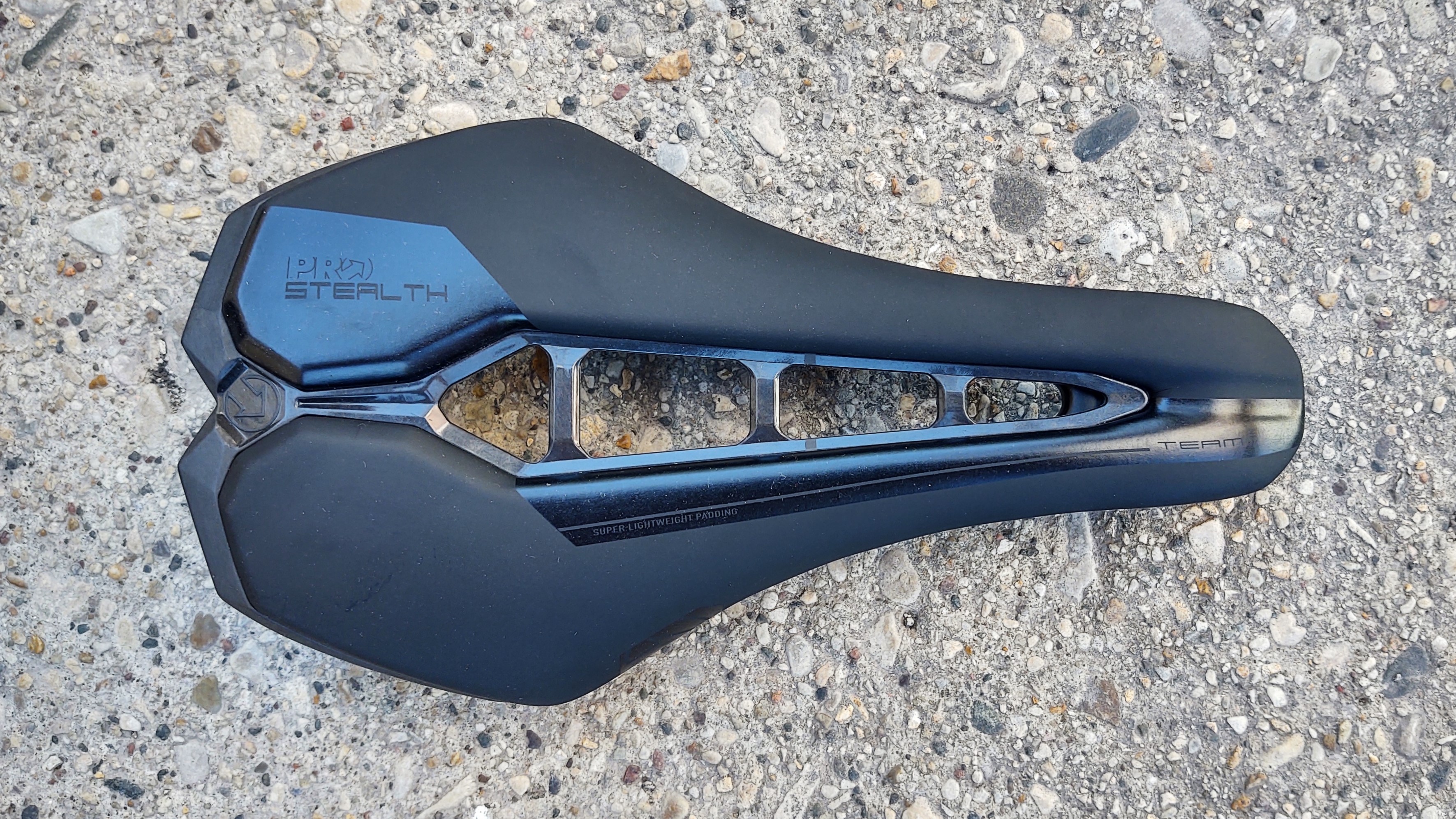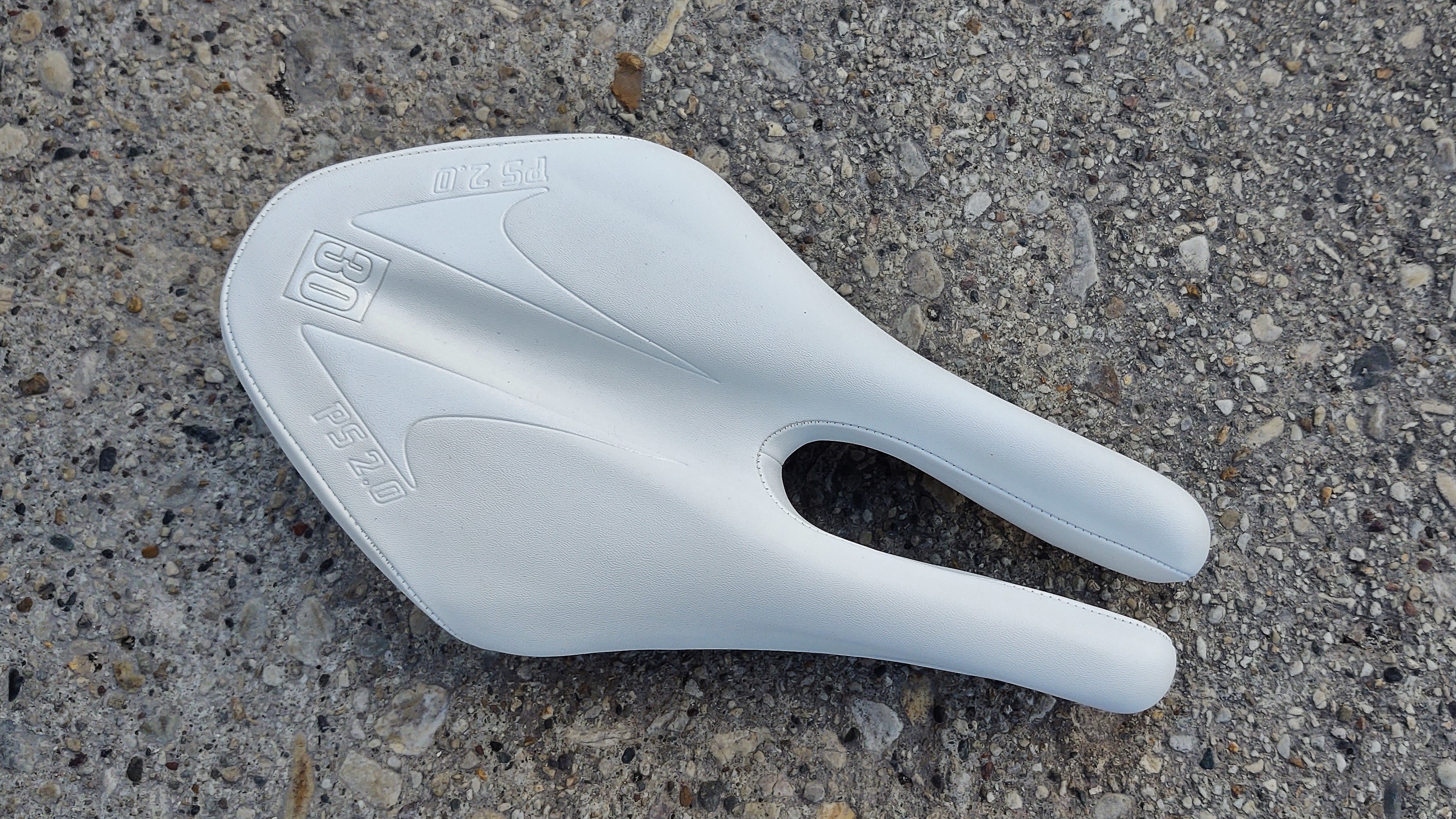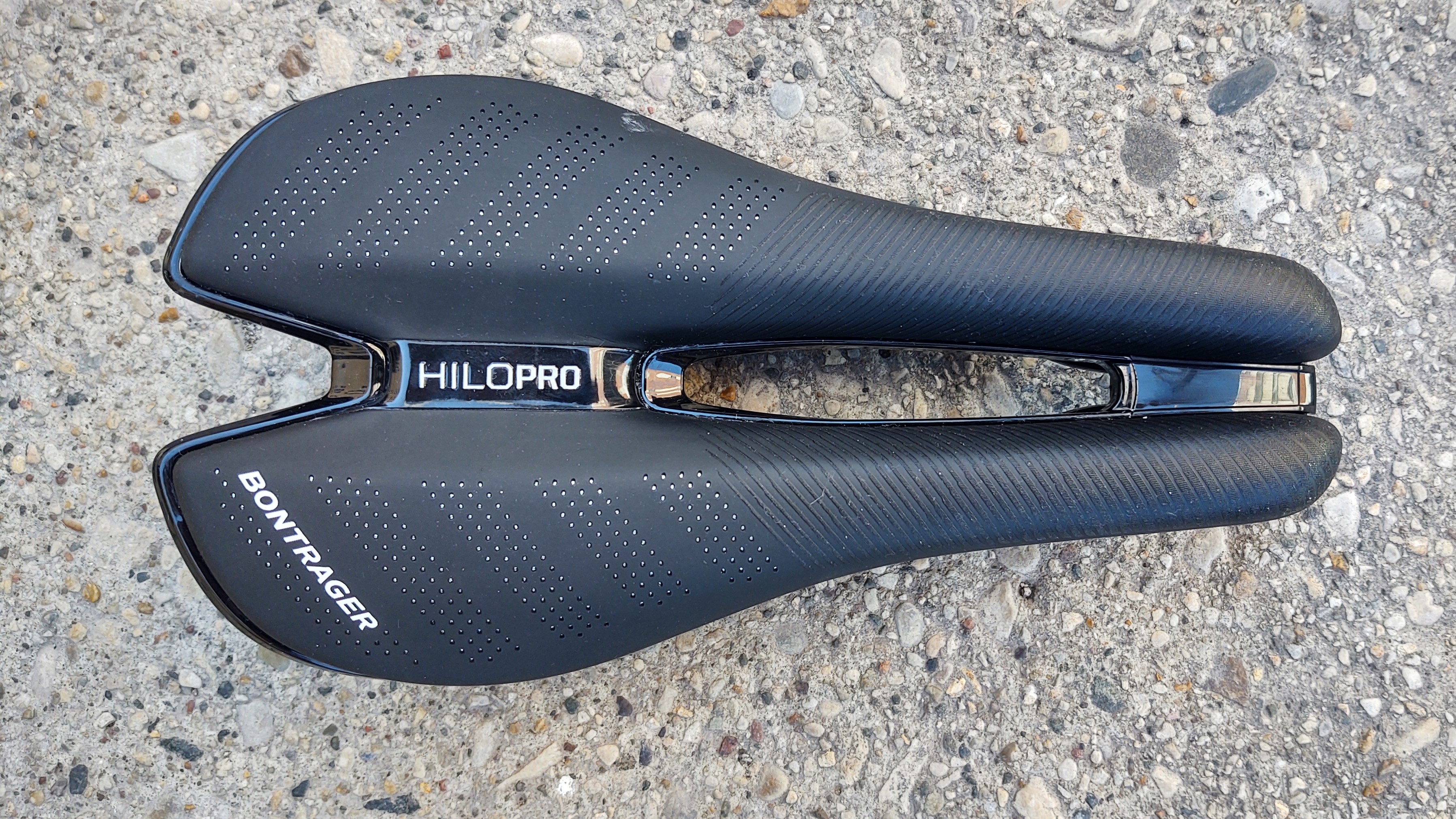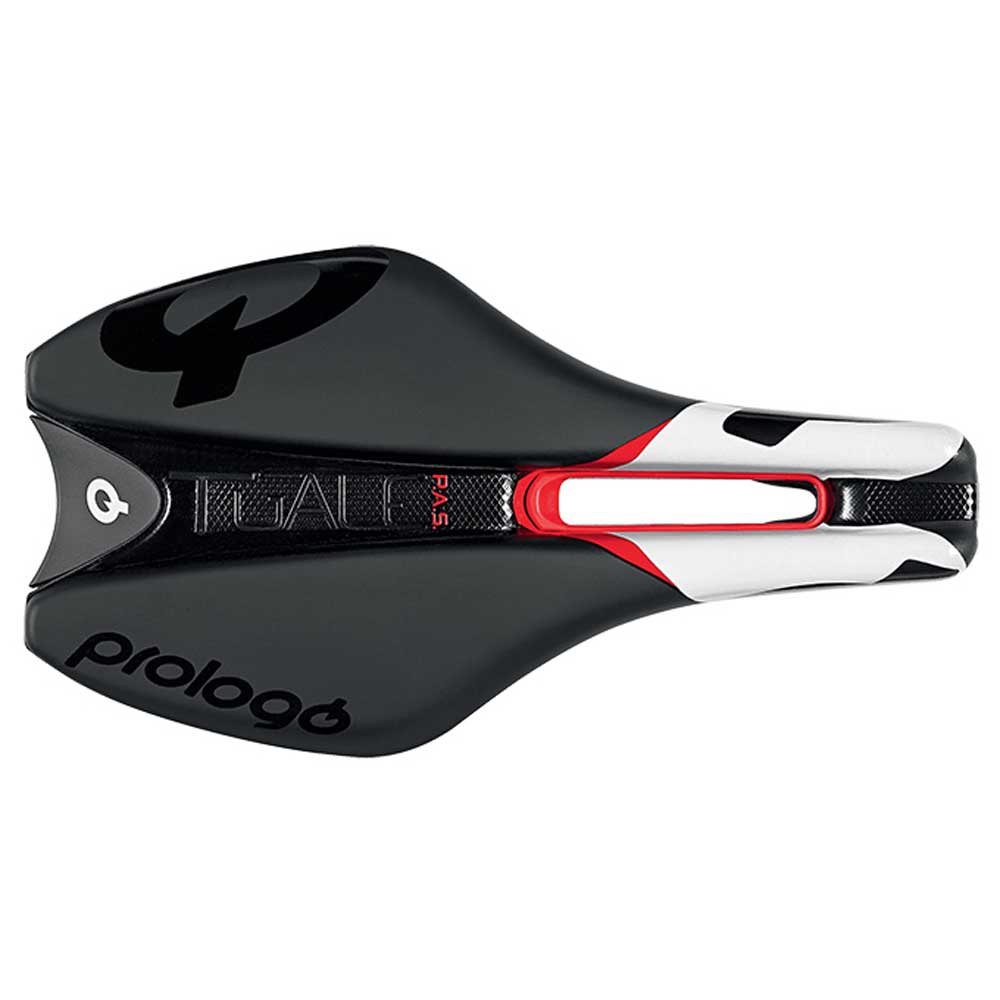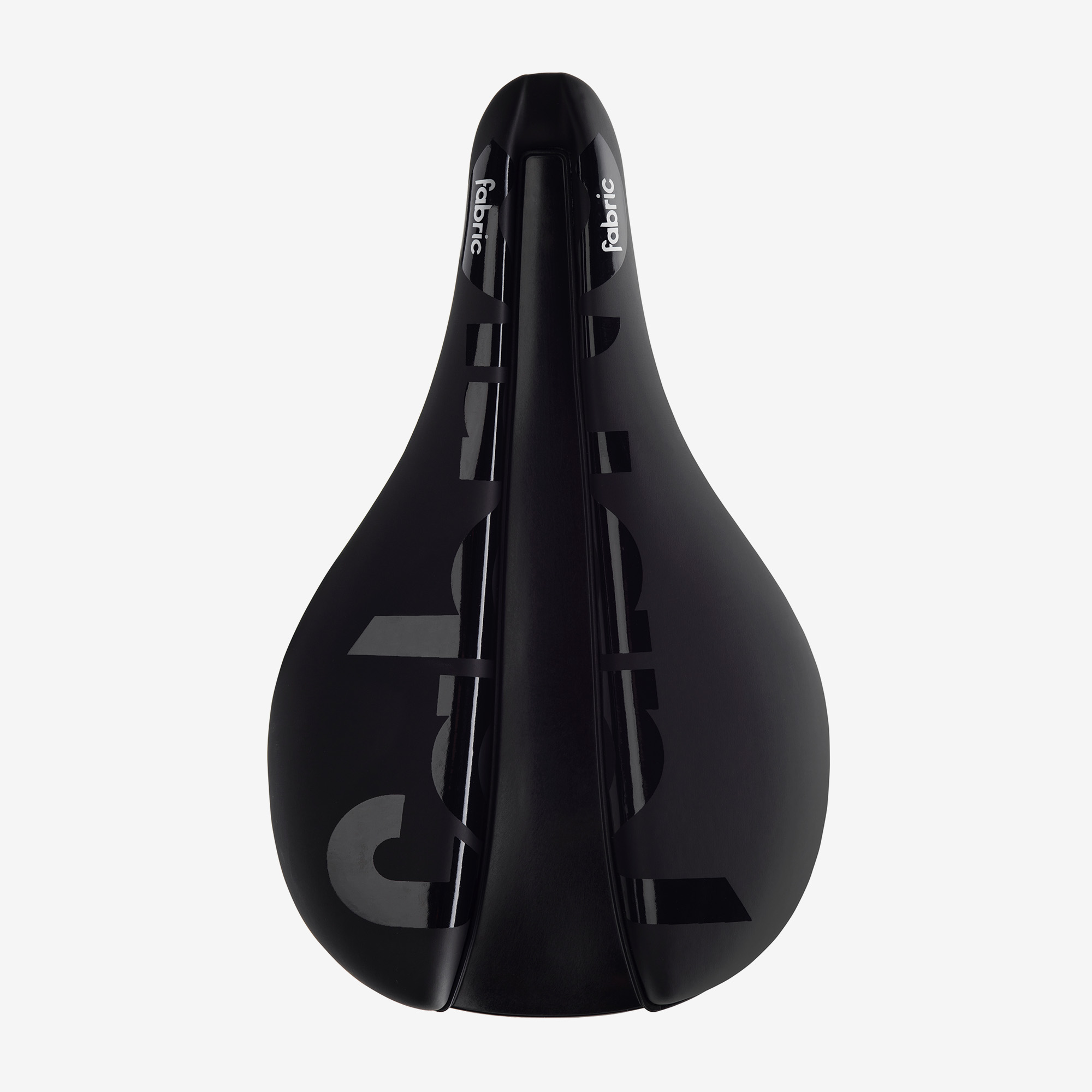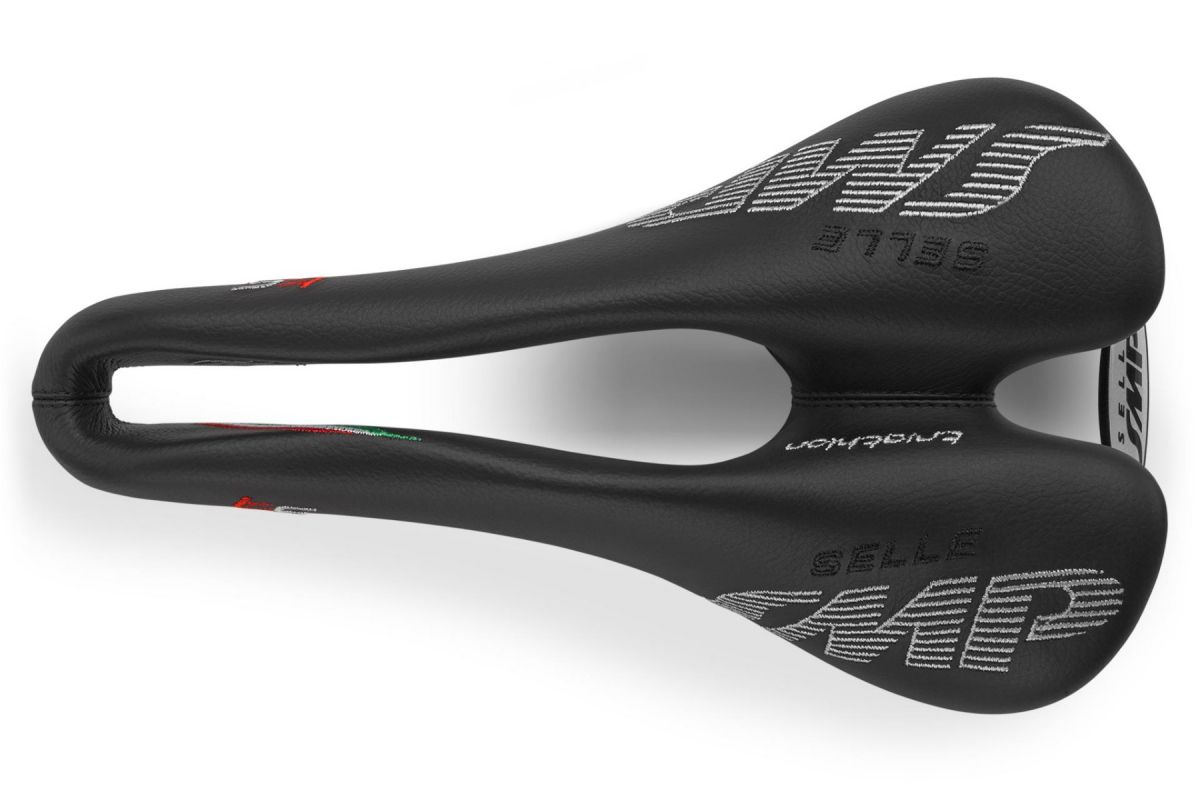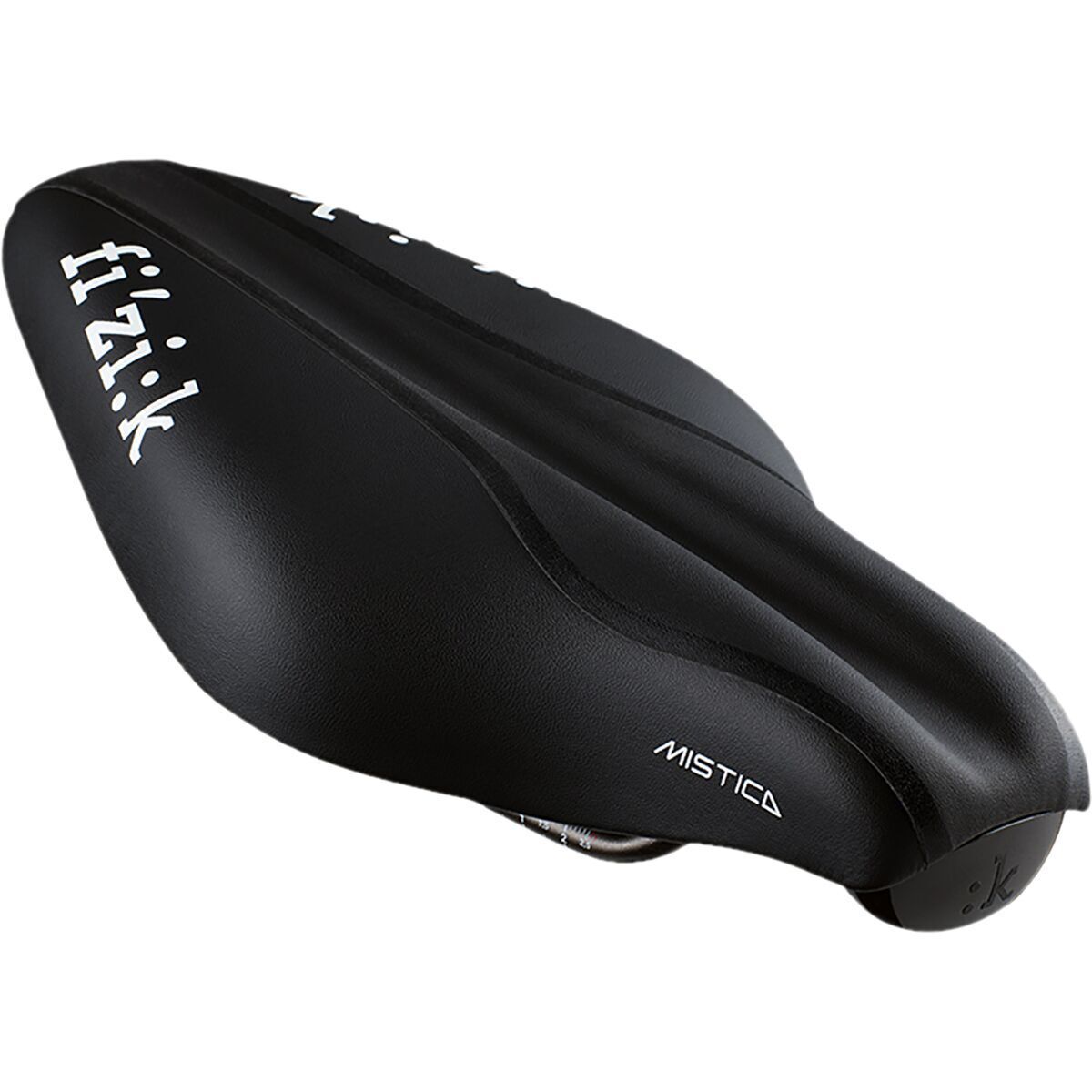Best triathlon saddles - Comfort and power in the aero position
A guide to the best triathlon saddles for men, women, short-course, and long-course racing

The saddle is one of the most underrated pieces of triathlon equipment. Of course, you could have, a shiny new helmet, the perfect pair of triathlon shoes or some aero-optimised triathlon wheels, but none of that matters if you are uncomfortable on your saddle.
A saddle can be the difference between riding to the win and riding in pain. Comfort is king, so as the best triathlon saddles help you stay comfortable, aerodynamic, and injury-free, they are in turn helping you to go faster. Triathletes are some of the toughest athletes in the world in large part due to the fact that they stayed planted in the saddle for hours at a time (and then run a marathon afterwards, for those racing Ironman).
For this article, we tried and tested the best triathlon saddles, and crafted a list of our 10 favourites for men, women, beginners, and seasoned professionals, but before diving into it, let’s take a closer look at triathlon saddles, and what makes one different from another.
The shape of a triathlon saddle is hugely important, with some saddles being wider or narrower at certain points. There is no “best shape” for a triathlon saddle, so we will go into detail about each saddle and explain why its shape is better for certain riders over others. The overall width of the saddle will change the amount of support that you feel in the saddle – the wider the saddle, often the more support it will give. Again, “support” is not a better/worse term, but it is often more important for beginner-level triathletes.
Central cutouts are a popular trend in both triathlon and the best road bike saddles, but again, there is no “best cutout for triathlon.” Instead, it is mostly down to personal preference, how big you want your cutout, how deep it runs through the saddle, and which riders benefit most from it. We will go into detail on each and every saddle.
When it comes to the actual materials in the saddle, we can look at the texture and density of each saddle as a major reference point. Again, there is not a leading material, but there are certain trends that work better for certain triathletes. Those with an angled seat position, for example, might prefer a rougher or stickier saddle, while beginner-level riders may prefer a softer and smoother saddle so that they can easily change their seat position.
Without further ado, let’s dive into our list of the best triathlon saddles available today.
ISM PN 3.1
Specifications
Reasons to buy
Reasons to avoid
The nose-less ISM PN 3.1 is one of the most popular saddles in not only triathlons but also in all of cycling. This unique design can be found on road bikes, gravel bikes, track bikes, and TT bikes, all well as triathlon frames, of course. The PN 3.1 is well-loved for its narrow shape and nose-less front, which means that the middle of the saddle tapers off quickly at the front end. There is a deep mid-cutout that relieves plenty of pressure on the saddle, plus there is extra padding to cushion the blow.
Perhaps the biggest downside of the PN 3.1 is its unique shape. Riders with an extreme-forward position may have nowhere to sit on a nose-less saddle, so the PN 3.1 is not the best fit for them. If that's you, consider the Pro Stealth Team, which is a short-nose road saddle that we find lots of riders get on with, while still offering a racy position. ISM also recommends that riders with minimal knee bend or more straight-legged pedalling use a different ISM saddle instead of the PN 3.1.
Thanks to the narrow front end, there is plenty of thigh clearance on the PN 3.1, making it one of the best triathlon saddles for riders with large legs. Tapered edges allow the slightest bit of movement on top of the saddle – not enough to slip off, but enough to slightly alter your position mid-pedal stroke or mid-corner.
Selle Italia Watt Gel Superflow
Specifications
Reasons to buy
Reasons to avoid
The Watt Gel Superflow is Selle Italia’s first triathlon-specific saddle, and it’s a good one. Known for creating world-beating saddles for all types of bikes, Selle Italia is typically geared towards performance, and the Watt Gel Superflow follows that trend. As opposed to other triathlon saddles which are more padded and comfortable, the Watt Gel Superflow is quite narrow, stiff, and straight. There aren’t any gimmicks here, just a triathlon saddle meant for speed.
There are some downsides to this approach though. It can lead to discomfort, so we don’t recommend it without trying it first. However, the Watt Gel Superflow is one of the most solid triathlon saddles in terms of construction, texture, and density. In addition, It's quite sticky – not actually sticky, but you definitely won’t be slipping off the nose of this one.
Pro Stealth Team
Specifications
Reasons to buy
Reasons to avoid
The Pro Stealth Team saddle is a favourite amongst performance-oriented road cyclists and triathletes, as it is a lightweight saddle that is still comfortable and wide enough to suit an array of riding positions. It offers plenty of support, and room to find your sweet spot in the middle of the saddle. However, extremely forward riders may struggle to find enough support on the Stealth Team saddle’s narrow front end.
The large cutout nearly runs the length of the saddle, although it doesn’t continue through the nose as it does on the ISM saddles – again, another reason that this saddle may not be the best for triathletes who prefer to sit on the front of their saddle. With downturned wings on the outside of the saddle, the medium-slippery surface is as comfortable as can be. Compared to the ISM saddles, the Pro Stealth is much thinner and less padded.
With a relatively dense surface and lightweight frame, the Stealth Team saddle is geared towards performance over comfort, making it one of the best mid-priced options for performance-oriented triathletes.
ISM PS 2.0
Specifications
Reasons to buy
Reasons to avoid
The PS 2.0 isn’t all that different from the ISM PN 3.1, our pick for the best overall triathlon saddle. Hence the name, the PS is the 'Performance Short' version, as opposed to the 'Performance Narrow' PN listed above. It is therefore shorter, wider (by 10mm at the rear), and that makes it perfect for aggressive TT efforts. However, this saddle has a fairly small sweet spot – the area where you can comfortably sit – and so it is not necessarily best for beginners. It also features a slight upward slope at the rear, which provides hip support in the aero position.
This is the best triathlon saddle for those who are comfortable in their aero position and who do not move around much. The PS 2.0 is a bit more difficult to move around on, but that’s the point – in general, more stability equals more speed, and the less you can move around in the saddle, the more power you will put out and the faster you will go.
Like all other ISM saddles, the PS 2.0 is nose-less, which helps relieve pressure between the sits bones, improves blood flow, and increases comfort. At the end of the day, it also leads to better performance. However, triathletes with extremely forward positions may find the ISM PS 2.0 uncomfortable, if not entirely unsuitable.
Compared to the 40-series foam used in the PN 3.1, the 30-series foam in the PS 2.0 is slightly harder and thinner. It is not a hugely significant amount, but it is enough to be noticeable for long-course triathletes who can be on the bike for seven hours at a time.
Bontrager Hilo Pro
Specifications
Reasons to buy
Reasons to avoid
One of the most unique saddles on our list, the Bontrager Hilo Pro offers a completely split design all the way from the nose through the back of the saddle. In general, I’d say this is a good thing, as most riders prefer split saddles versus traditional, filled-in saddles. However, as a departure from a normal road saddle, it's perhaps best to try before you buy.
The Hilo Pro is also quite narrow all the way through, which may limit position options and room to find your sweetspot. However, this isn’t too big of an issue for most triathletes – beginners may still be trying to find their position, whereas experienced riders already know where they want to sit.
The texture and density of the Hilo Pro is on the medium-high side, making it a slightly-padded saddle that is hard to slip off of. For a saddle of this calibre, I expected a harder surface, but the dual-density foam padding helped increase comfort without sacrificing too much in performance.
The oversized carbon rails help reduce the Hilo Pro’s overall weight, but they are short enough that they can limit your fitting options. Again, this saddle may not be best for beginners, but it is a great option for experienced riders and long-course triathletes who love the split-saddle design.
Prologo T-Gale Pas
Specifications
Reasons to buy
Reasons to avoid
The defining feature of the T-Gale Pas is its anatomical and performance-oriented design. Crafted in the wind tunnel by Prologo, this saddle is meant for speed in triathlon and in time trials using Connect Power Control (CPC) technology. CPC is the small pads on the surface of the saddle which help keep the rider planted in place while in the saddle, thus increasing performance and efficiency.
Using a flat design from front to back, the T-Gale Pas is also extremely tapered, with a wide rear giving way to a short and narrow front – in fact, the saddle’s nose is 4.5cm shorter than the standard saddle. This design is meant to increase power in the aero position, and I could certainly feel the difference.
To increase comfort and blood flow, the T-Gale Pas uses Perineal Area System (PAS) technology which effectively fills in the space where a saddle cutout would be. There is actually a complete cutout in the T-Gale Pas, although it is quite small. But from back to front, the entire saddle has a central channel that helps relieve pressure and numbness in the saddle.
Because of the starkly tapered shape of the T-Gale Pas, there is a relatively small area from which you could find your sweetspot. Too far back and the saddle is ultra-wide, too far forward and you’re sitting on the short and narrow nose. Let’s hope that you can find your sweet spot right near the middle.
Lastly, the T-Gale Pas is on the heavier side, but it does come with two different rail options. The Nack carbon rails help save 28g over the Thyrox rails made of aluminium alloy.
Specifications
Reasons to buy
Reasons to avoid
By far the cheapest saddle on our list, the Fabric Line-S Elite Flat is less than half the price of some of the other options – in some cases, it only costs one-third of other triathlon saddles. What you get here is a performance triathlon saddle that is wider than all others, lacking a cutout, and replacing it with a pressure relief channel instead.
The Line-S Elite Flat is super wide – 10-20mm wider than some other triathlon saddles – which provides a huge base of support for all kinds and sizes of riders. There is a huge amount of space to find your sweet spot, making this the best saddle for beginner triathletes. Factor in the cost, and it is even better.
What you’ll be missing is the complete cutout and textured surface that helps keep you planted in the saddle. This saddle is quite slippery, and the pressure relief channel isn’t quite as effective as a complete cutout. Thus, the Line-S Elite Flat is not the best saddle for long-course triathletes, as it just isn’t as comfortable as other options.
Selle SMP T5
Specifications
Reasons to buy
Reasons to avoid
The SMP T5 is the most robust triathlon saddle on our list, and it’s easy to see why. An array of cover options envelops the carbon-reinforced saddle body on top of a 7.1mm-thick steel frame. Rails are available in either aluminium alloy or carbon fibre, with the latter saving nearly 50g on an already heavy saddle. Fixing plates are an uncommon addition, and you can find them reinforcing the saddle’s frame at its rear.
Overall, the SMP T5 is long and wide for the entire body of the saddle, making it ideal for beginners and larger riders. If you’re looking for the largest amount of seating positions, the SMP T5 is perfect for you. There is also a very large cutout in the middle of the SMP T5, extending all the way to (but not through) the end of the nose. This cutout helps relieve pressure between the sits bones and increases overall comfort.
Padding in the SMP T5 is quite thick, in accordance with the rest of the saddle which values comfort and robustness over lightweight performance. Beginner triathletes who are still looking to find their ideal fit should go with the SMP T5. The frame is long and wide, giving you plenty of options to find your ideal riding position, and it is all paired with a frame and padding that relieves pressure and increases overall comfort.
Fizik Transiro Mistica Kium
Specifications
Reasons to buy
Reasons to avoid
Designed to help you achieve the perfect aerodynamic riding position, the Transiro Mistica Kium looks like a saddle with the nose cut off. In fact, that’s pretty much what it is, and it measures just 240mm long. But with extra-length Kium alloy rails, you still have plenty of room to move the saddle and adjust your riding position.
That said, one of the Mistica Kium’s biggest downsides is also its biggest strength. A super short saddle is great for achieving the ultimate aero position, but it also gives you almost no wiggle room. In case you’re nursing a saddle sore, or you just want to change your position the tiniest bit, there are a lot of places to go on the Mistica Kium.
But for experienced riders and long-course triathletes, the Mistica Kium is one of the best triathlon saddles thanks to its comfortable and pressure-relieving design and grippy texture. Though there isn’t a complete cutout, there is a pressure relief channel that runs the length of the saddle and all the way through the cut-off nose.
Overall, the Mistica Kium is quite a wide saddle, with even the smallest size being too wide for some riders. However, the extra width will help increase comfort and stability for those who desire it. Finally, the Mistica Kium also comes with a carriage kit where you can mount extra gear such as a saddle bag or water bottles.
How to choose the best triathlon saddle for you
Choosing a triathlon saddle is a lot like choosing a pair of running shoes. Of course, budget, style, and colour will influence your decision, and maybe even weight and performance. But the most important aspect is that the shoes fit and they are comfortable to run in.
In this case, you want to choose a saddle that is comfortable and functional, one that fits your needs without breaking the bank. When it comes to style, it doesn’t really matter – the saddle is going to be tucked under your backside, so no one is going to see it anyway. Weight may be a small factor, but 50g isn’t going to make any difference on a flat triathlon course, and won't make much difference on climbs either.
Looking closer at the saddles on this list, we can see that the main differences are shape, texture, material, width, and density. Many triathletes choose a saddle based on comfort and personal preference, but here I will try to give you some general guidelines.
Beginner triathletes may want a saddle that is wide and soft, providing plenty of support and wiggle room in the seated position. Stick with saddles that are on the smoother side rather than grippy, and a smaller cutout in case you’ve never tried that style of saddle before.
Experienced triathletes may go for saddles that are firmer and narrower, providing a solid base to keep pushing the power for hours on end. Saddles with a larger cutout tend to be more comfortable for long periods of time, as they help relieve pressure on sensitive tissue. Riders with chafing issues should avoid these types of saddles, which is why we recommend them for more experienced riders. Firmer saddles are great for experienced triathletes, too, because they eliminate bounce and help maintain efficiency in the saddle.
The narrower the saddle, the less wiggle room there is, which is why we recommend narrower saddles for experienced riders rather than newbies.
Above all, comfort is queen. No matter how good your saddle looks, how little it weighs, or how fast the manufacturer claims it goes, your saddle needs to be comfortable first. Cycling should never be painful – in fact, it should be comfortable. Not only does this make triathlon more enjoyable, but it also increases your efficiency, improves your aerodynamics, and helps you go faster for the same amount of watts.
Which is the best triathlon saddle?
Like shoes and chamois, there is no ‘one size fits all’ when it comes to choosing a triathlon saddle. A lot of the saddle’s likeness comes down to personal preference. With that, every rider is built differently and that affects how we sit on the saddle. The cut-off nose designs and split saddles are generally more comfortable – but then again, they’re not for everyone.
The best triathlon saddle is the saddle that is the most comfortable, powerful, and efficient. It may take a few tries for you to find the best saddle, but most bike shops and manufacturers will offer you a 30-day trial period where you can return the saddle for free if it doesn’t fit.
For competitive triathletes, a lightweight saddle is even more important as you don’t want to be losing time on the climbs. A saddle such as the Pro Stealth Team by Shimano is one of the lightest triathlon-specific saddles built for performance and speed.
Are triathlon-specific saddles worth it?
In most cases, a triathlon-specific saddle is worth it versus a traditional road cycling saddle. The Speed and Comfort Type T, for example, is specifically built for female triathletes and features a very small nose and mid-cutout. This improves overall comfort and increases the sweet spot area more than any traditional road saddle could.
Alternatively, there is the Pro Stealth Team by Shimano which more closely resembles a lightweight road saddle than a snub-nosed triathlon saddle.
Short-course triathletes and beginners might not benefit as much as other triathletes when it comes to a triathlon-specific saddle. In these cases, the bike leg is relatively short, so saddle comfort is not as important as it is for Ironman triathletes.
Do I need a carbon triathlon saddle?
Carbon triathlon saddles are generally lighter and stiffer than comparable triathlon saddles. This leads to increased performance and power transfer in carbon saddles, but the difference is difficult to measure. Most triathlons are relatively flat, which means that weight is not as important on the bike as you might think.
A stiffer saddle may be more or less comfortable for certain riders, but this is mostly down to personal preference. It is always best to try a saddle for yourself. And of course, there is the cost – carbon is expensive, so it is really only the elite-level triathletes who gain a significant performance benefit from their saddle material alone. Casual triathletes and beginners should choose the most comfortable saddle regardless of its material.
How do we test the best triathlon saddles?
We took each one of these triathlon saddles out on the road and tested them in both the time trial/aero position and the upright riding position. Among the metrics we measured, quantitatively or qualitatively, were overall comfort, grippiness in the aero position, variety of available positions, and power transfer.
We have ridden these saddles in both hot and cold weather, in the rain and in the dry. We’ve taken them up climbs and down descents, and powered in the saddle for extended periods on a flat road. It is important to test both the extreme cases and the more expected ones, such as the saddle’s feeling on a climb versus in the aero position.
The latest race content, interviews, features, reviews and expert buying guides, direct to your inbox!
Zach is a freelance writer, the head of ZNehr Coaching, and an elite-level rider in road, track, and e-racing. He writes about everything cycling-related, from buyer's guides to product reviews and feature articles to power analyses. After earning a Bachelor’s Degree in Exercise Science at Marian University-Indianapolis, Zach discovered a passion for writing that soon turned into a full-fledged career. In between articles, Zach spends his time working with endurance athletes of all abilities and ages at ZNehr Coaching. After entering the sport at age 17, Zach went on to have a wonderful road racing career that included winning the 2017 Collegiate National Time Trial Championships and a 9th place finish at the 2019 US Pro National Time Trial Championships. Nowadays, Zach spends most of his ride time indoors with NeXT eSport.
